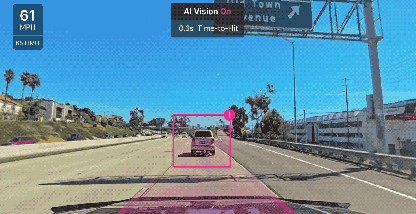By Travis Baskins, Head of Regulatory Affairs at Motive
On January 14, 2022, the U.S. Federal Motor Carrier Safety Administration (FMCSA) officially launched the Safe Driver Apprenticeship Program. A pilot program that will train and certify drivers between 18 to 20 years old “to operate commercial motor vehicles (CMVs) in interstate commerce.”
This initiative aims to address ongoing capacity challenges facing trucking, made more acute by the impact of COVID-19, supply chain disruptions, and an aging workforce choosing to retire early.
Drivers, their trainers, and carriers must adhere to pre-established standards and follow specific regulations to qualify for this program, as do the vehicles used for this program. Vehicles must be outfitted with specific safety technologies, such as a speed governor set at 65 mph or less, an active braking collision mitigation system, and a forward-facing video event capture system (e.g., dashcam).
The U.S. government’s requirement of these technology features underscores their benefit and the role they play in keeping the roads — and the drivers — safe, and for good reason too. In a 2021 survey of Motive customers, 72% said investing in fleet management and safety technology made their fleets safer, and 52% said it helped them reduce accidents. Customers using the Motive dashcam technology saw a 35% reduction in accidents and a 60% decrease in safety incidents.
Dashcams are key for accident prevention, exoneration, and motivating safe vehicle operation. As long as the technology is operating, it’s capturing footage in real time and collecting additional data, such as hard cornering, sudden braking, and rapid acceleration.
For fleet managers, this information is crucial for three reasons.
- Evidence collection: In the event of an accident, dashcam footage and other feedback data can reveal what happened before, during, and after the collision, minimizing the risk of inaccurate recounting or conflicting stories.
- Driver training: Fleet managers can use this information to improve their driver training programs. When critical safety events occur, safety managers can use the footage captured from the dashcam to show drivers what went wrong, and, more importantly, how to prevent similar incidents in the future. With video, conversations are based on evidence and result in practical tips instead of assumptions and misinformation.
- To motivate and reward: With hard data and contextual video telling the rest of the story, safety professionals can identify trends within their operation and celebrate drivers who show improvement and demonstrate excellence in the field.
For regulators and policymakers, dashcams provide another source of valuable data that will be used to inform the Department of Transportation Secretary’s report to Congress upon the completion of the apprenticeship pilot program. This report will address, among other things, safety analysis of the apprentice drivers, the effectiveness of the safety technologies and training required under the program, and a recommendation regarding whether the apprentice drivers were as safe as the CMV operators 21 and older. With this data and evidence, the FMCSA can determine whether it will or won’t let CMV operators between the ages of 18 and 21 cross state borders.
While the Safe Driver Apprenticeship Program may be hotly debated, and some safety concerns opponents of the plan have produced are legitimate, the program is an excellent solution for gauging the safety and feasibility of lowering the age limit for interstate commercial driving. While enabling younger drivers to operate interstate is hardly an answer to all of trucking’s capacity woes, it certainly signals acknowledgement of the problem.
Also, requiring that apprentice drivers operate vehicles equipped with advanced safety tech like dashcams indicates that Congress understands the role that technology plays in road safety. Thanks to advancements in truck manufacturing, fleet management platforms, and safety technology, we’ve never been better positioned to accelerate progress toward our shared goal of making trucking safer.










